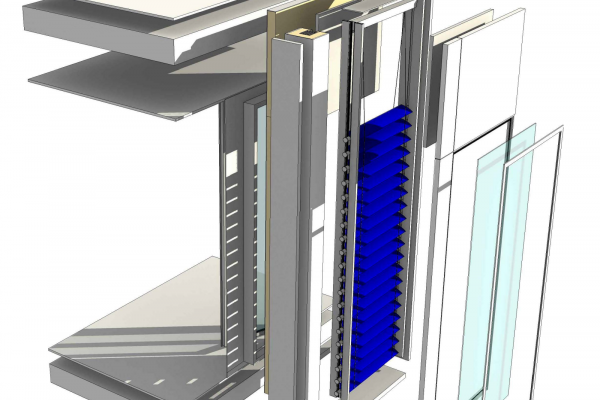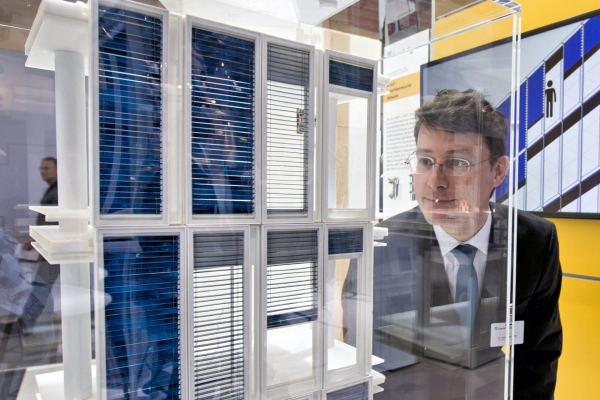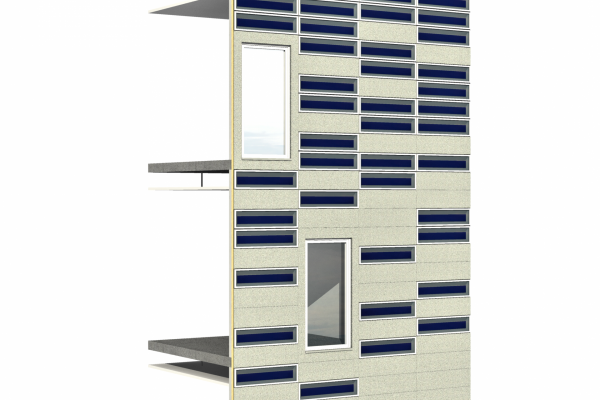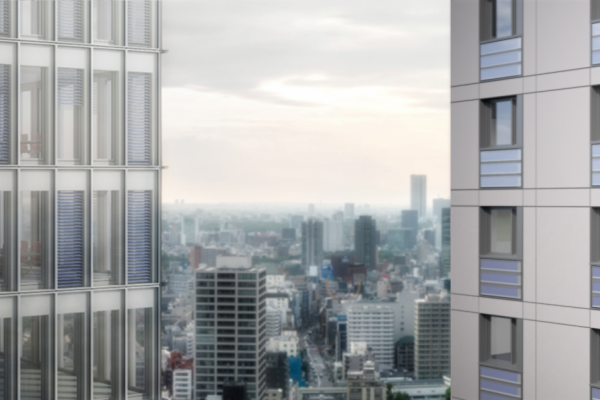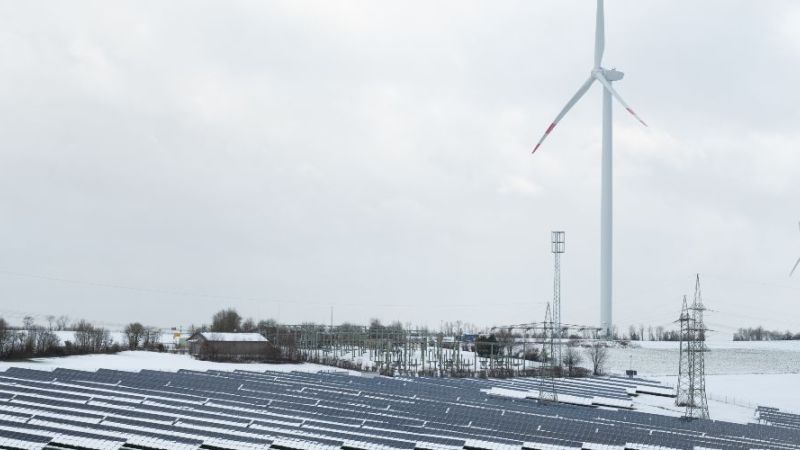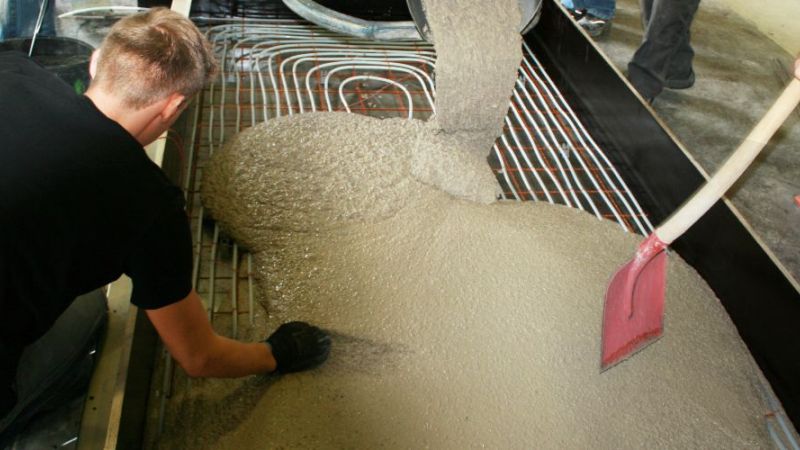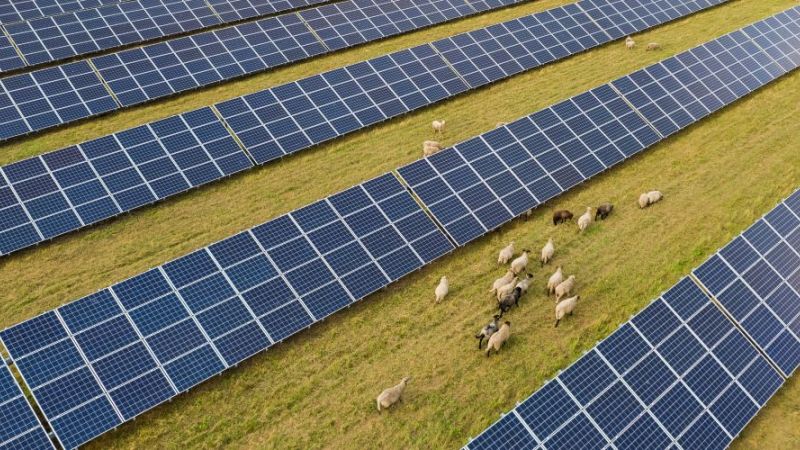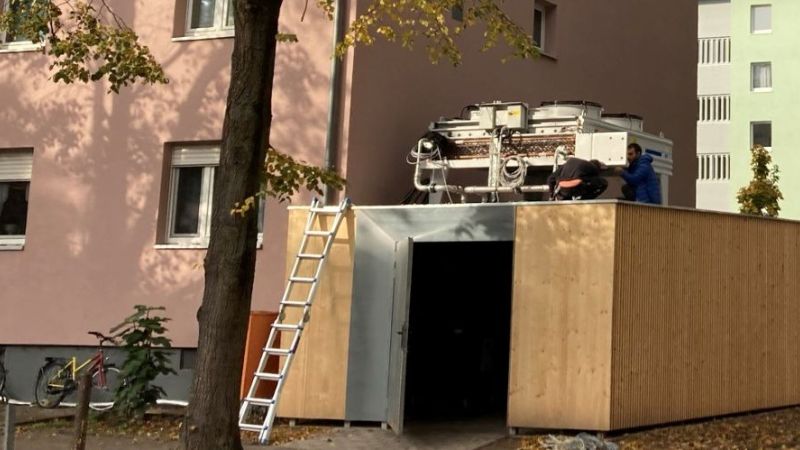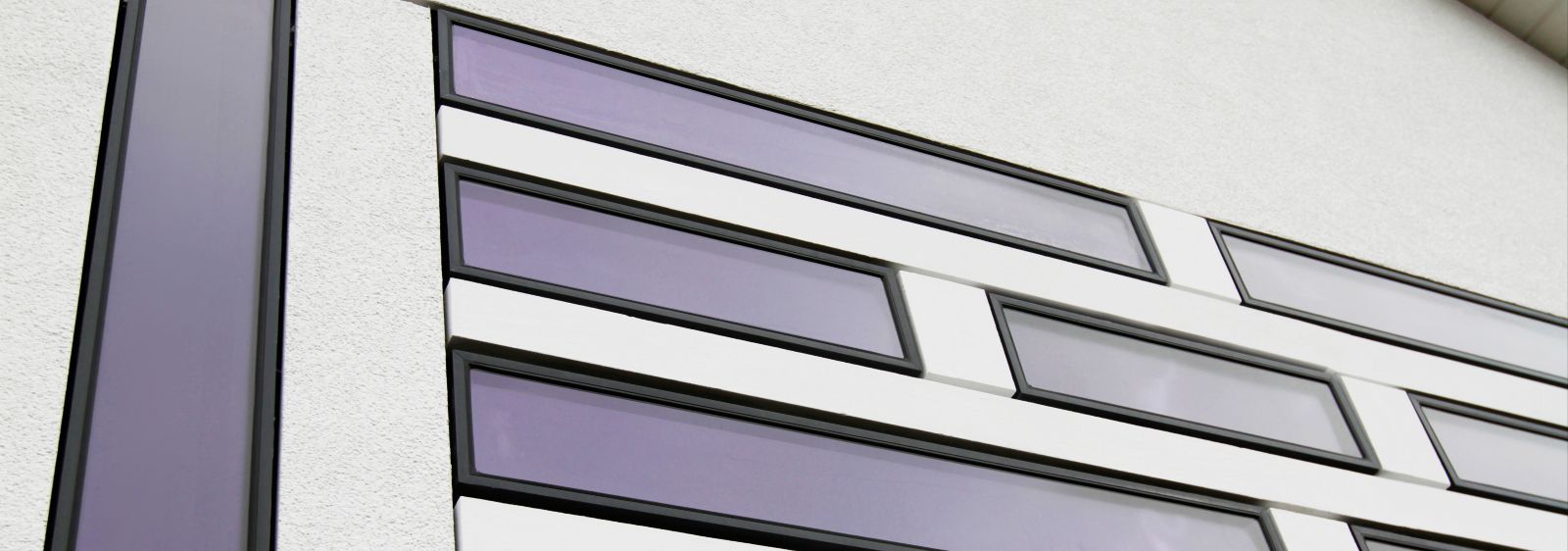 © DAW SE/Karim Donath
© DAW SE/Karim Donath
Multifunctional solar facades
Facade-integrated solar collectors with multiple uses
The ArKol research project aims to develop two innovative facade collectors from the initial concept to application readiness: a so-called strip collector that allows a considerable degree of freedom in terms of the geometry and material, and a solar thermal blind that can be inserted between glazing panes.
Solar collectors are usually relatively thick and large in size, and therefore not so easy to use for achieving aesthetically pleasing architecture. Therefore, concepts are required which simultaneously provide both considerable creative freedom and multiple uses with a high degree of integration. Facade-integrated solar thermal technology extends the scope for using solar thermal heat in buildings. At the same time, higher solar yields are possible with a favourable cost-benefit ratio.
In high-rise buildings, blinds are often inserted between the glass panes. When exposed to sunlight, these reach high temperatures, which increases the cooling requirements of the building compared with external solar shading systems. The solar thermal blind offers the full mobility provided by conventional Venetian blinds but also increases the thermal comfort, lowers the cooling demand and provides solar thermal heat for the building services equipment. The concept is still in its initial stages and shall be developed and tested within the scope of this project.
Many architects want more creative freedom when utilising solar thermal energy. Indeed, many architects and developers have previously not given any close consideration to the use of solar collectors as facade solutions for aesthetic reasons. This is therefore what makes the concept for collectors in strip form so interesting. The material in the intermediate spaces and the distances and lengths of the strips can be freely chosen. This offers a whole new range of design possibilities for architecture while at the same time generating solar heat.
Research focus
The solar thermal blind is designed to be as mobile as a normal blind, but at the same time provide solar heat and reduce the g-value. It requires only a few additional components when compared with conventional Venetian blinds between glass panes. The development is therefore focussing on low-cost components and reliable mechanisms in order to reduce the cost of the primary energy savings compared with alternative approaches.
The strip collector is also being developed as a facade system so that the heat generation costs are lower than with other technologies. Both technologies are intended to be implemented with a focus on achieving aesthetically high-quality buildings. Both technologies use heat pipes with a dry connection between the collectors, which allows a high degree of flexibility in terms of the collector design.
Successes
To date, five mechanisms for the switchable, thermal coupling of the Venetian blind slats have been developed and investigated. In the meantime, several architects and builders have expressed their interest in using solar thermal blinds in construction projects.
Application
It is planned that both technologies will be installed in real buildings in 2019.

